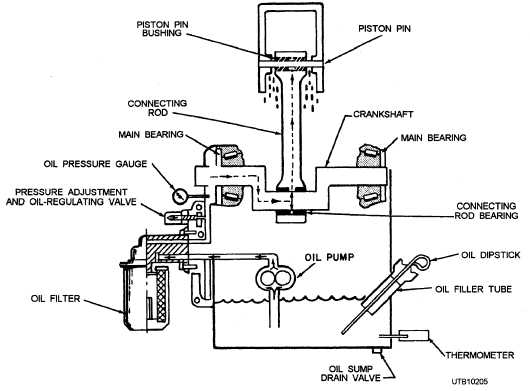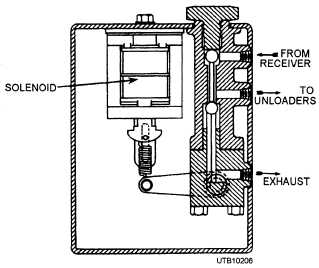
Figure 6-40. - Lubricating oil system of a low-pressure air compressor.
methods are discussed in the paragraphs that follow. These methods include the following:
Closing or throttling the compressor intake
Holding intake valves off their seats
Relieving intercoolers to the atmosphere
Relieving the final discharge to the atmosphere (or opening a bypass from the discharge to the intake)
Opening up cylinder clearance pockets
Using miscellaneous constant-speed unloading devices
Combinations of the above methods
As an example of a typical compressor unloading device, consider the MAGNETIC-TYPE UN- LOADER. Figure 6-41 shows the unloader valve arrangement. This unloader consists of a solenoid- operated valve connected with the motor starter. When the compressor is at rest, the solenoid valve is de- energized to admit air from the receiver to the unloading mechanism. When the compressor reaches near-normal speeds, the solenoid valve is energized to release the pressure from the unloading mechanism and to load the compressor again. For details on the unloading devices, refer to the pertinent manufacturer's technical manuals for compressors installed in your command.
Since compressors draw in ambient air, or the air surrounding the compressor, the intake is fitted with an AIR INTAKE FILTER. This filter keeps the intake air free of dust and other airborne particles. If dust-laden air enters the compressor, internal combustion, triggered by the heat of compression, can take place within the cylinders.
Moist or humid air drawn into the compressor cylinders poses another problem. The air intake filter

Figure 6-41. - Magnetic-type unloader.
Continue Reading